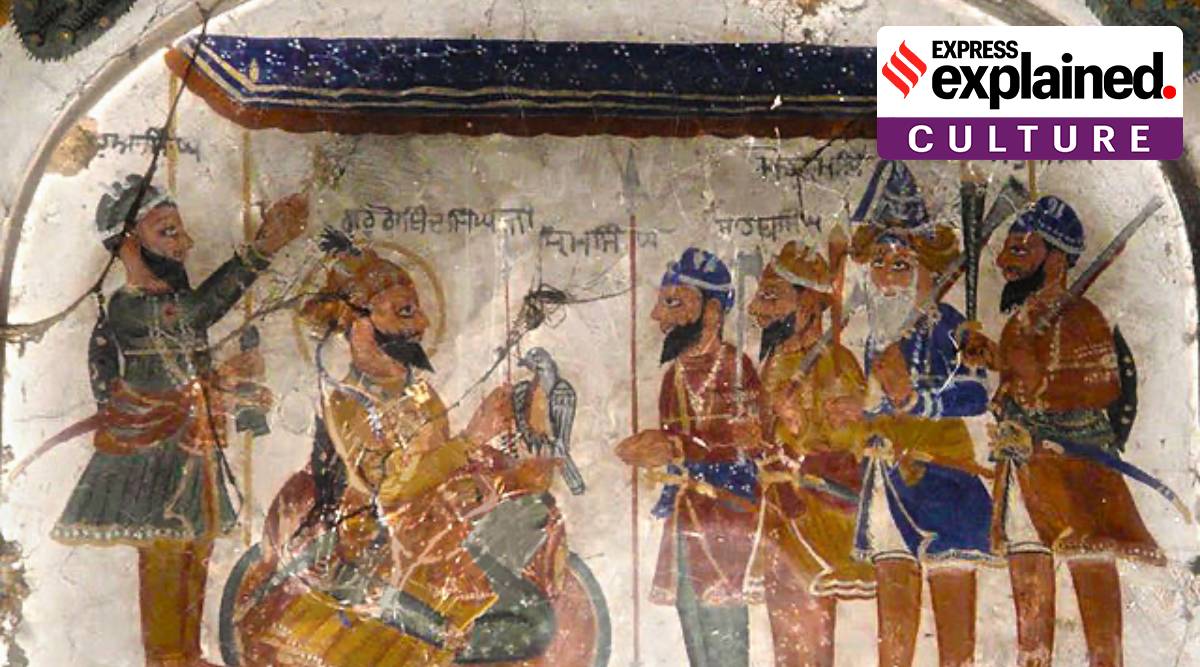'Panj Piare' is not just a group of five baptised people but a concept and tradition founded by 10th Sikh Guru Gobind Singh.
Former Uttarakhand chief minister Harish Rawat has apologised for comparing Punjab Congress chief Navjot Sidhu and his four advisers to the Panj Piare. On Wednesday, he not only rendered his apology but also promised to do sewa at a gurdwara in his state as a form of penance.
But who are the Panj Piara?
‘Panj Piare’ is not just a group of five baptised people but a concept and tradition founded by 10th Sikh Guru Gobind Singh.
Guru Gobind Singh established the institution of Panj Piare while founding the Khalsa on the day of Baisakhi in 1699. Addressing a large gathering, he asked for five heads for sacrifice. Five men responded to his call and the Guru baptised them and called them Panj Piare.
Since then, every group of five baptised Sikhs is called Panj Piare and accorded the respect enjoyed by the first five Sikhs.
Who were the first Panj Piare?
The Panj Piare were from different castes and states of India. While Bhai Daya Ram hailed from Lahore, Bhai Dharam Rai was from Hastinapur in Uttar Pradesh, Bhai Himmat Rai came from Jagannath in Odisha, Bhai Mohkam Rai from Gujarat and Bhai Sahib Chand was from Bidar, Karnataka.
In return, Guru Gobind Singh made them drink Amrit (sweet water prepared by reciting Gurbani) from one utensil. Then he suffixed Singh with their names and renamed them Bhai Daya Singh, Bhai Dharam Singh, Bhai Himmat Singh, Bhai Mohkam Singh and Bhai Sahib Singh.
Apart from defining the religious and social protocol for the Khalsa by dictating it to the Panj Piare, Guru Gobind Singh himself got baptised from them at the same stage to tell the Sikhs that Panj Piaras have higher authority and decision making power than anyone in the community.
The Panj Piare are also seen as a manifestation of the Guru himself.
How did the Guru establish the authority of Panj Piare?
Once, Guru Gobind Singh and his Khalsa army were besieged at Chamkaur by the joint army of Mughal and mountain kings. The Khalsa troops wanted Guru Gobind Singh to leave Chamkaur but he refused.
It was then that the Panj Piare ordered the Guru to leave Chamkaur. Guru Gobind Singh did as orders as he was duty bound to follow their command like other Sikhs.
This event is behind the deep-rooted respect accorded to Panj Piare. They have taken many important decisions throughout Sikh history.
Who can become a Panj Piara?
Any baptised Sikh can become a Panj Piare. The unanimous decision taken by Panj Piare has to be followed by everyone in the community. Akal Takht Jathedar also can’t take any decision unilaterally and every diktat from the Akal Takht has to be signed by all the five Jathedars of the five Takhts (Temporal seats) or their representatives.
There was huge controversy when the SGPC-appointed Panj Piare had summoned then Akal Takht Jathedar Giani Gurbachan Singh over the issue of pardon granted to Dera Sacha Sauda head Gurmeet Ram Rahim in 2015.
The SGPC was in a fix and it used its powers to sack the Panj Piaras from the job. However, mishandling of this crisis by the SGPC reflected poorly on the Shiromani Akali Dal-Badal, and added to the long list of allegations, which the party was already facing for allegedly demeaning Sikh institutions, traditions and concepts. SAD could secure only 15 seats in the following elections in 2017.
Newsletter | Click to get the day’s best explainers in your inbox
Then Punjab cabinet minister Bikram Singh Majithia, while campaigning for the Bhartiya Janta party candidate Arun Jaitley in the 2014 parliament elections, had slightly changed the lines from the Sikh holy text during a speech in Amritsar. This angered the clergy and Majithia had to apologise and face the threat of ‘excommunication’ from the Akal Takht.
There are many such incidents where even a slight misinterpretation of the sacred Sikh traditions and holy text have stoked a controversy often leading to the clergy meting out a symbolic punishment to the wrongdoer.
The Sikh clergy is very wary of people belittling its traditions or the holy text in any way. Hence, comparisons made in jest are also not taken kindly.
Source: Read Full Article



